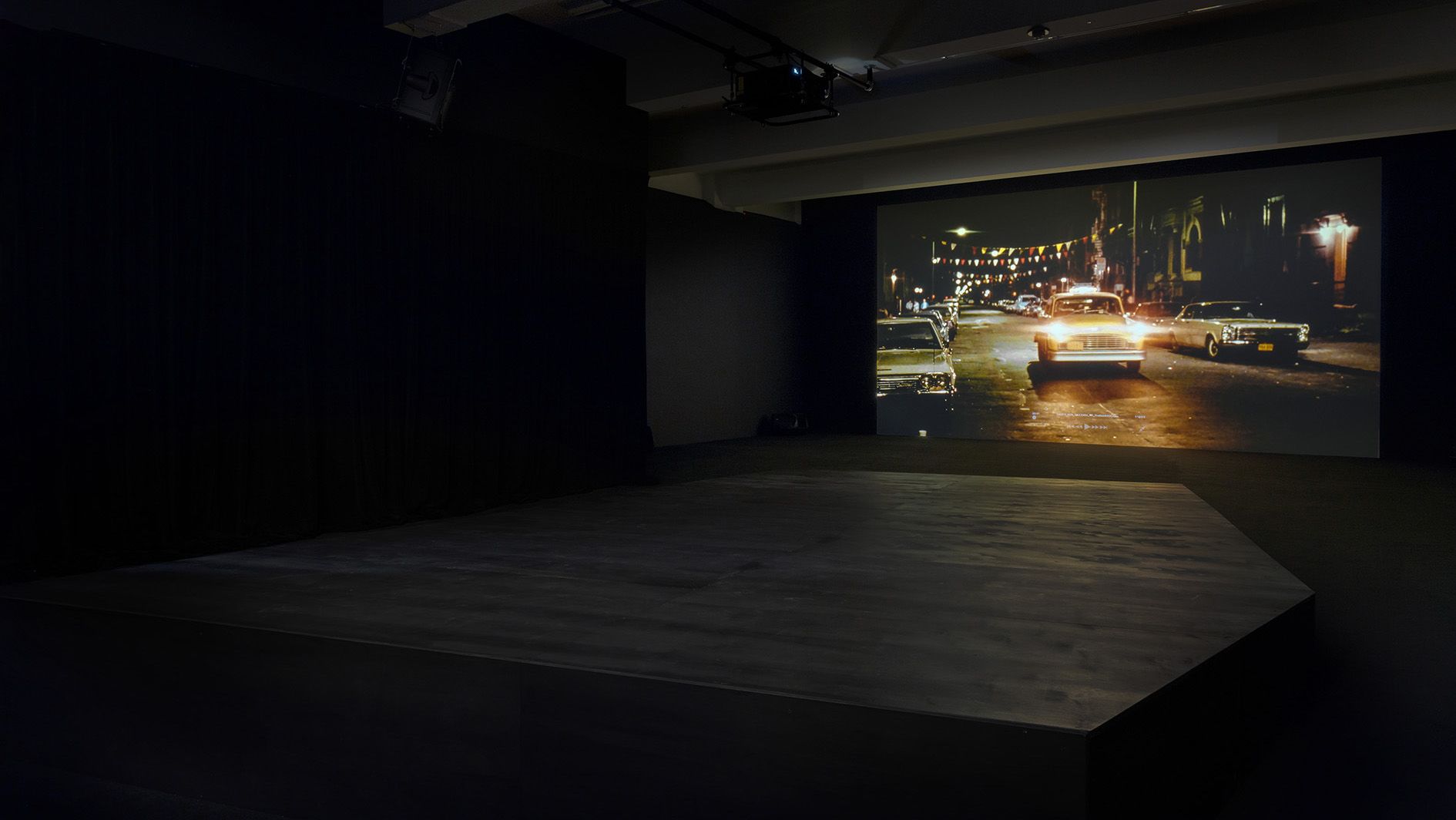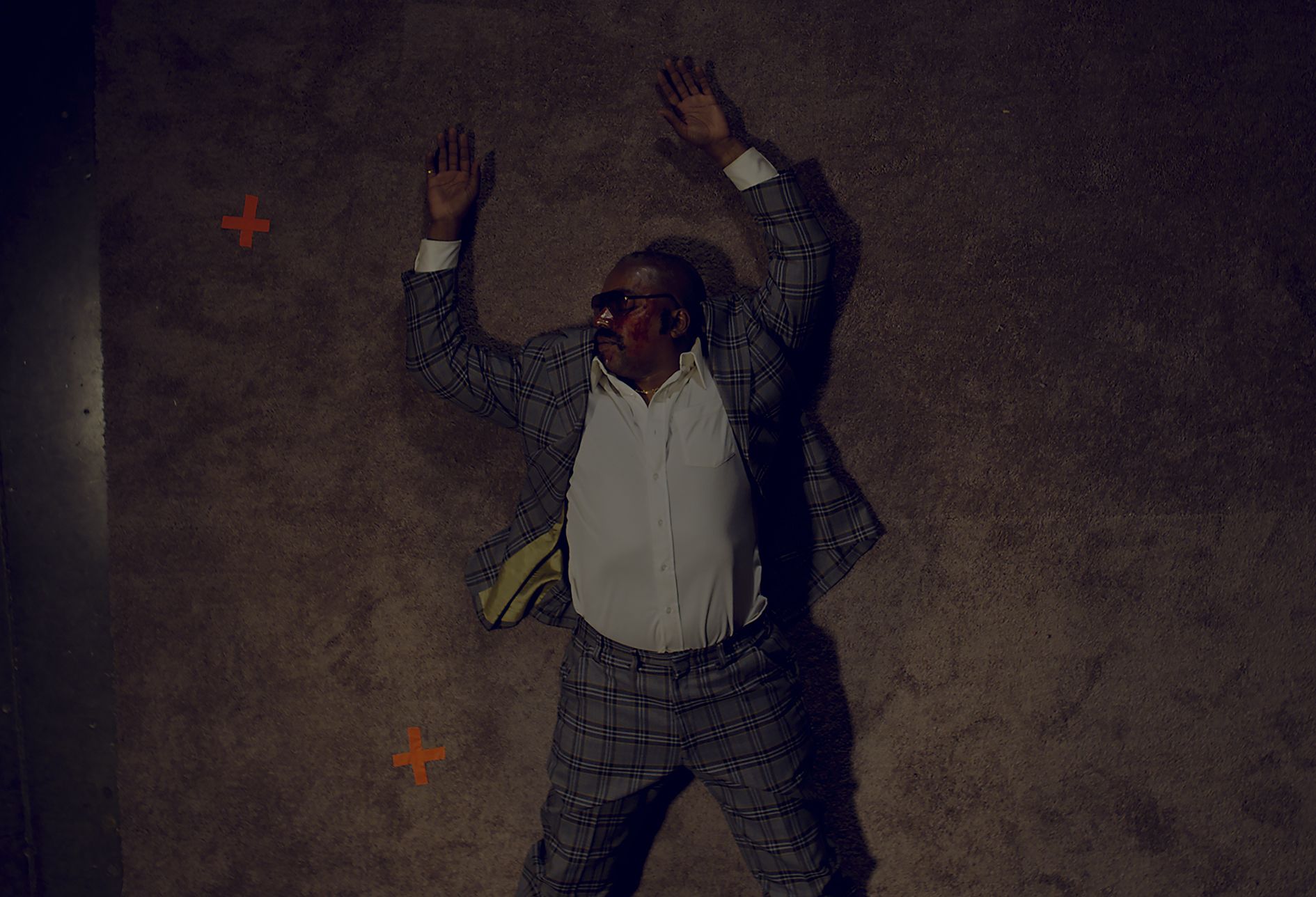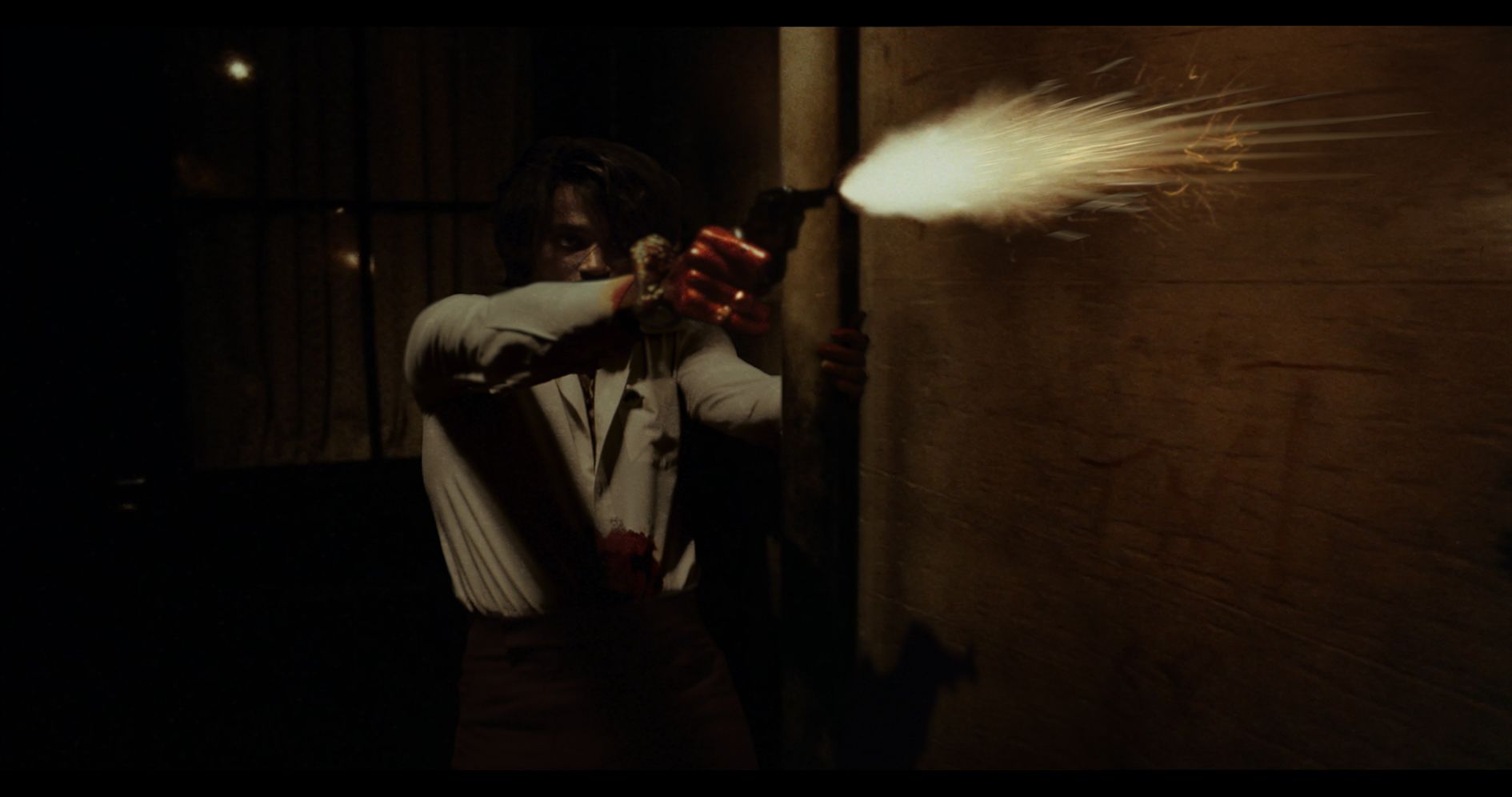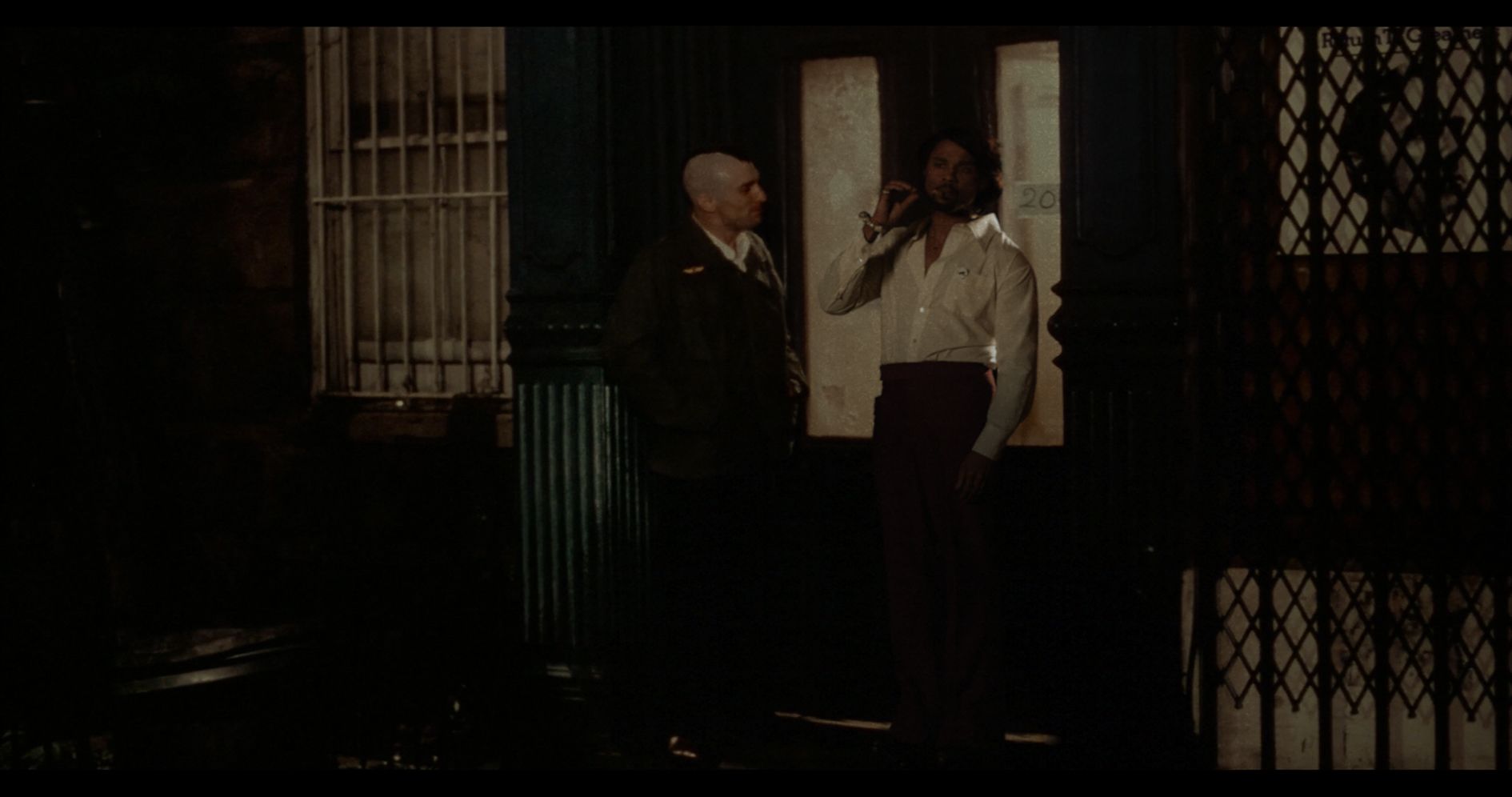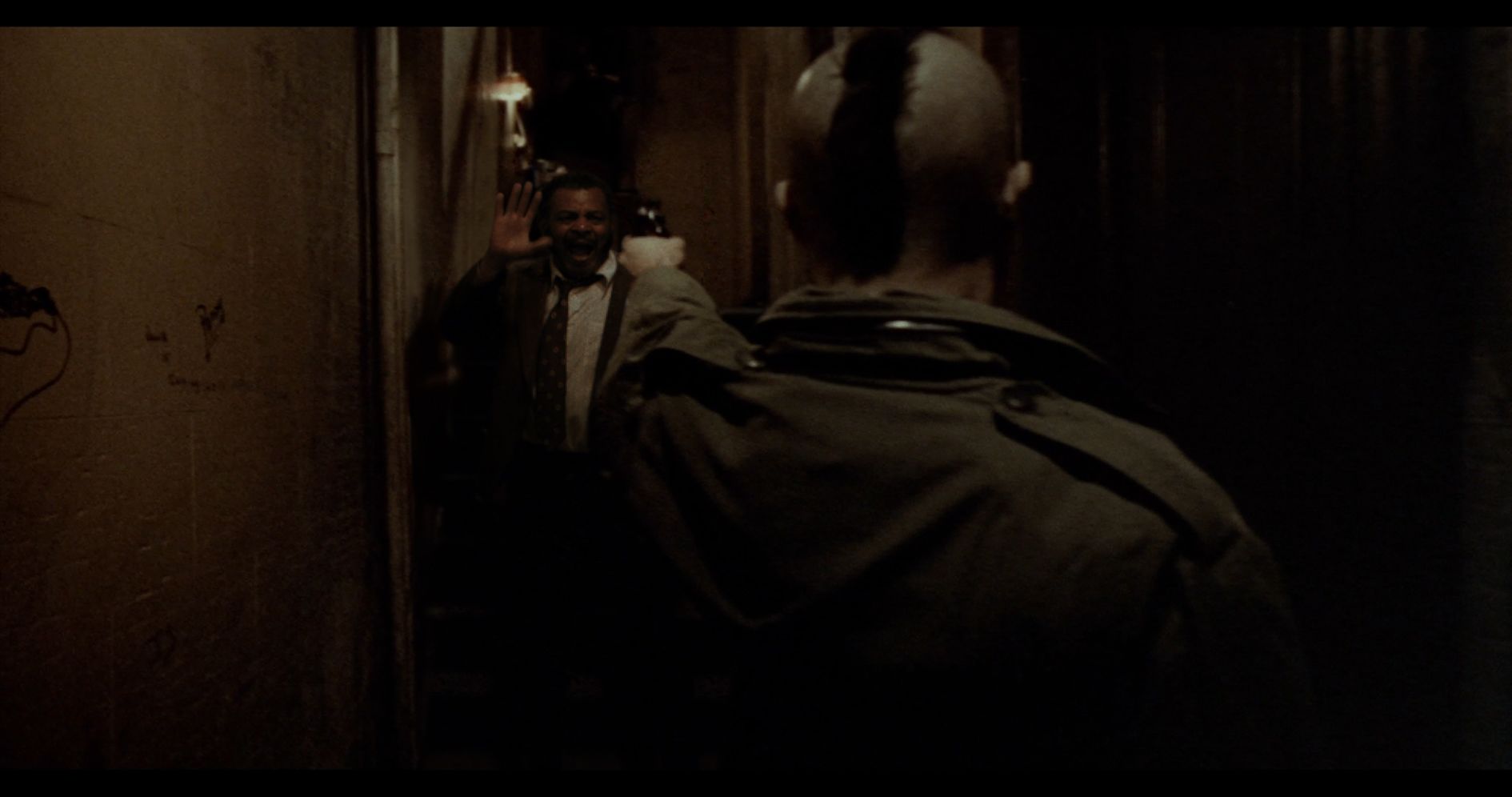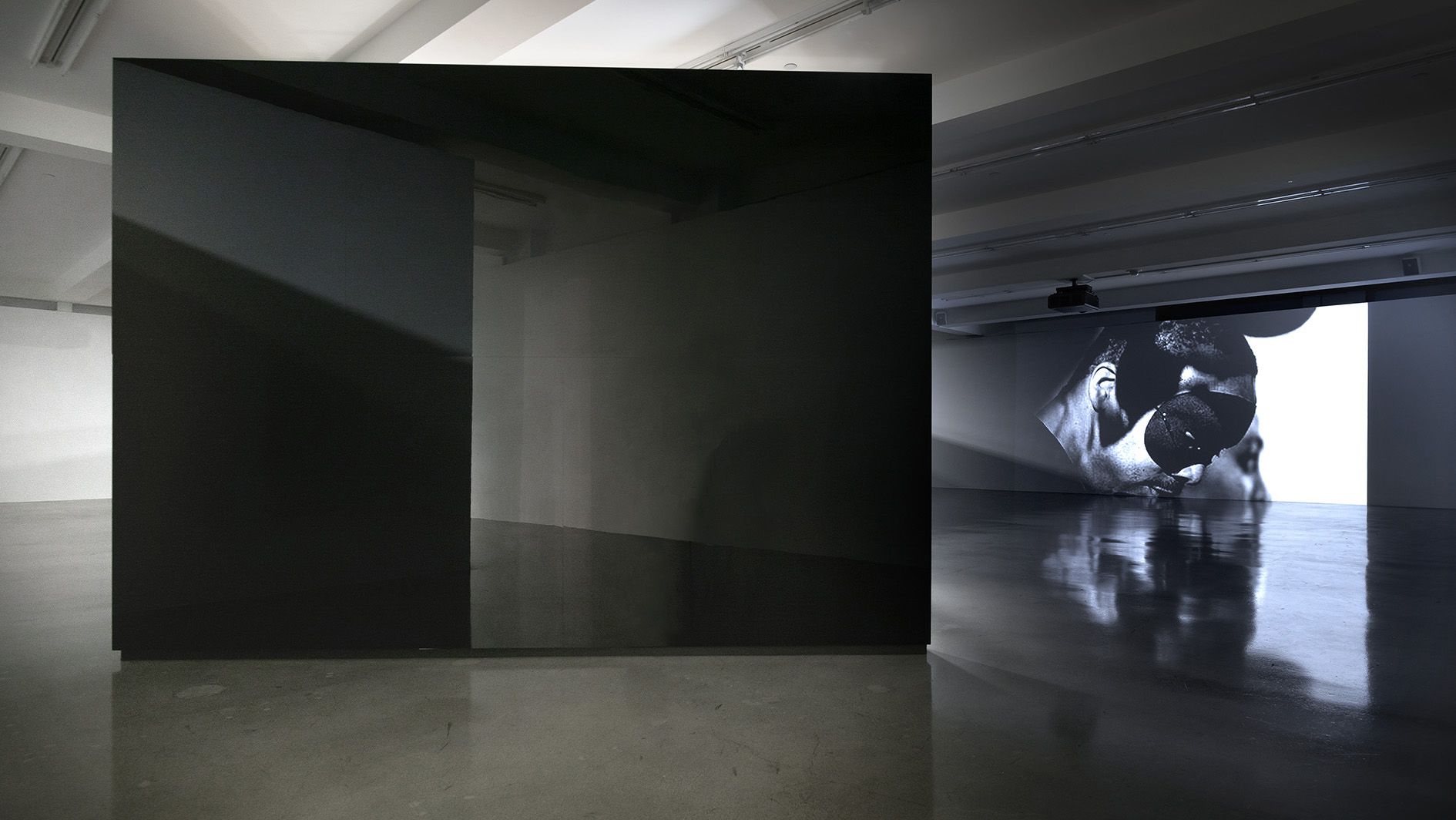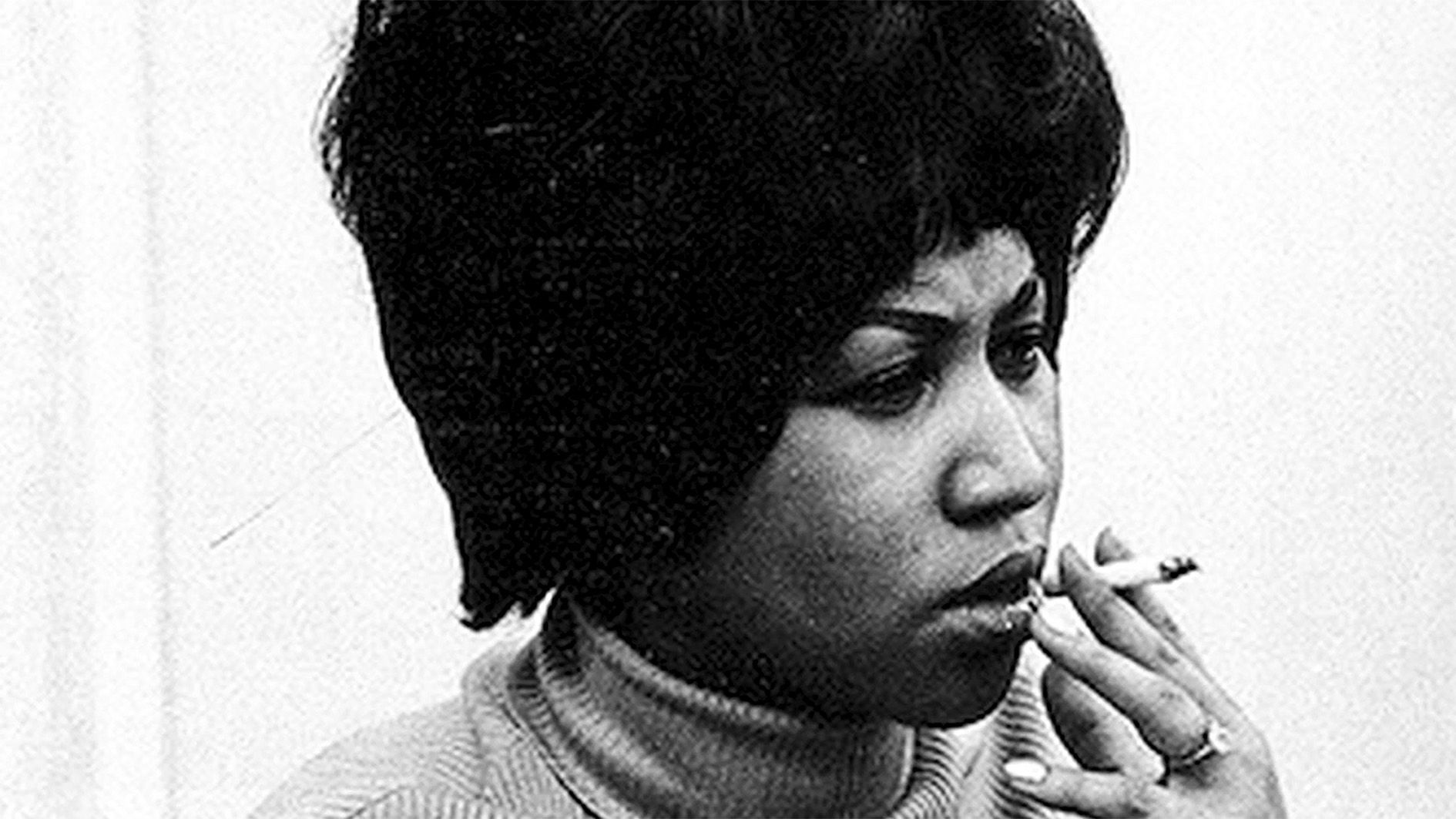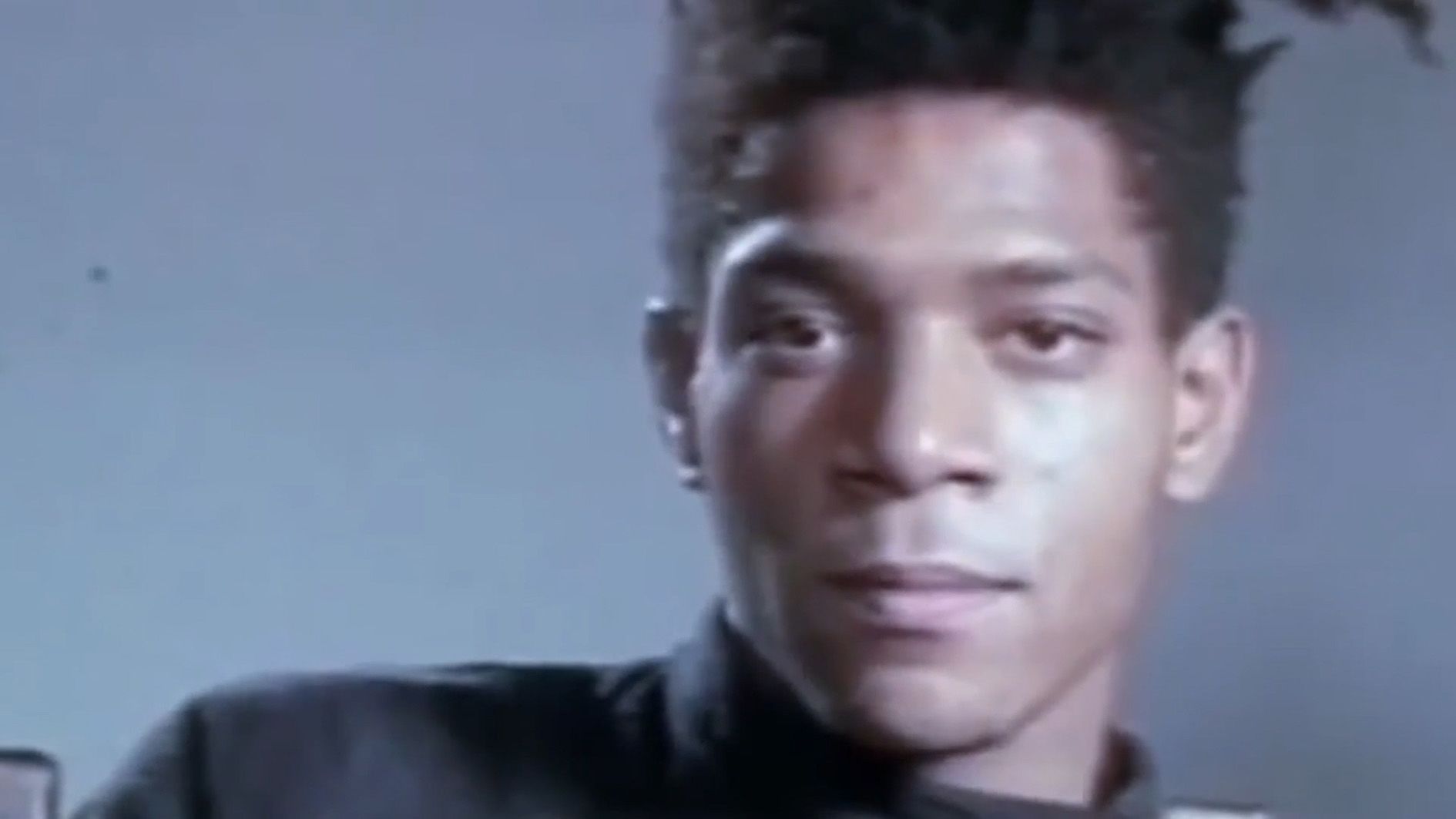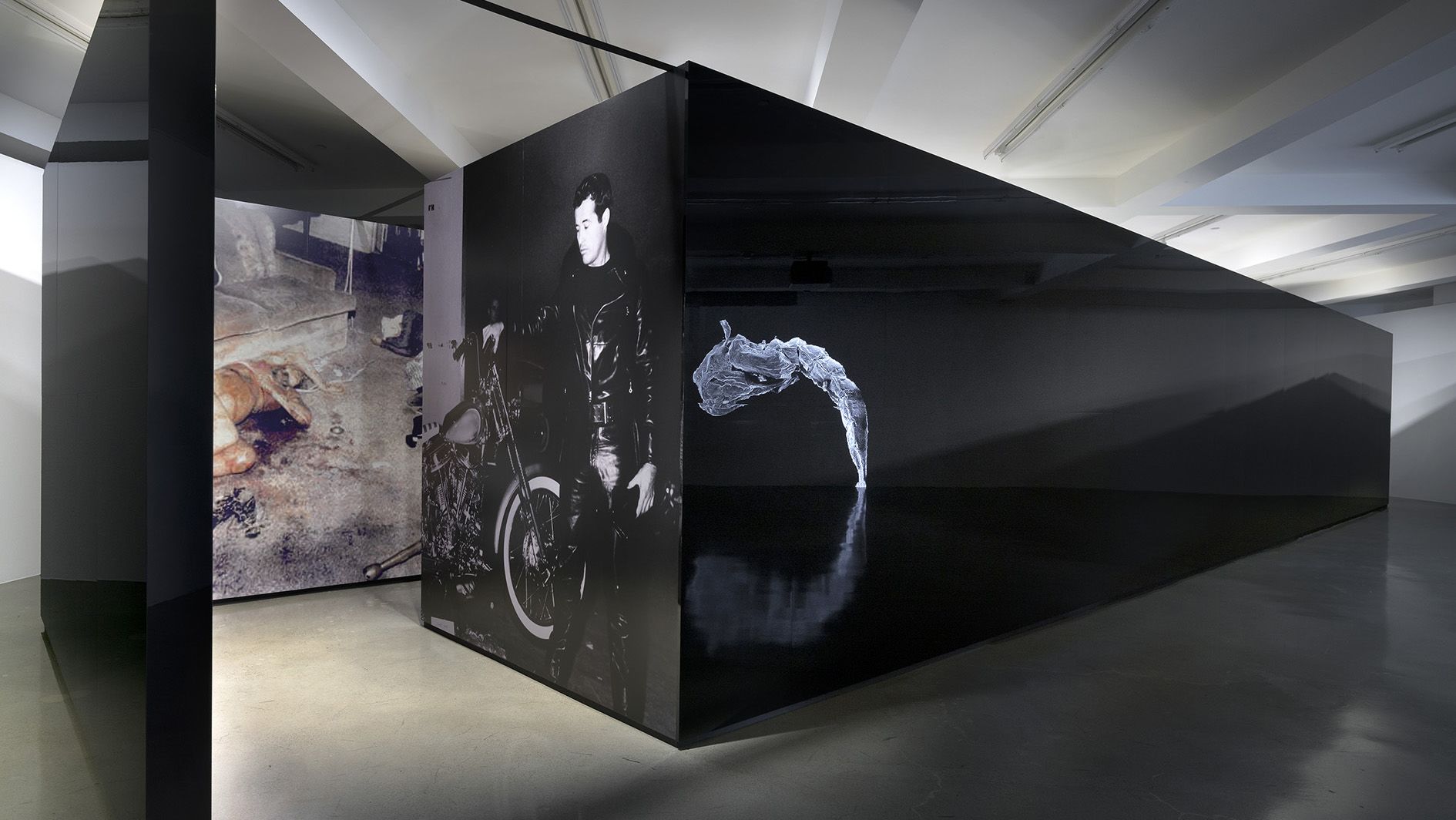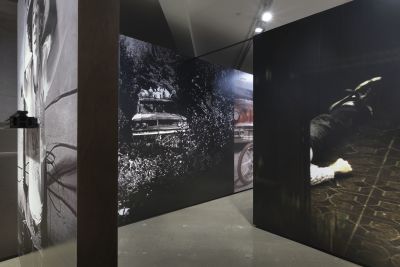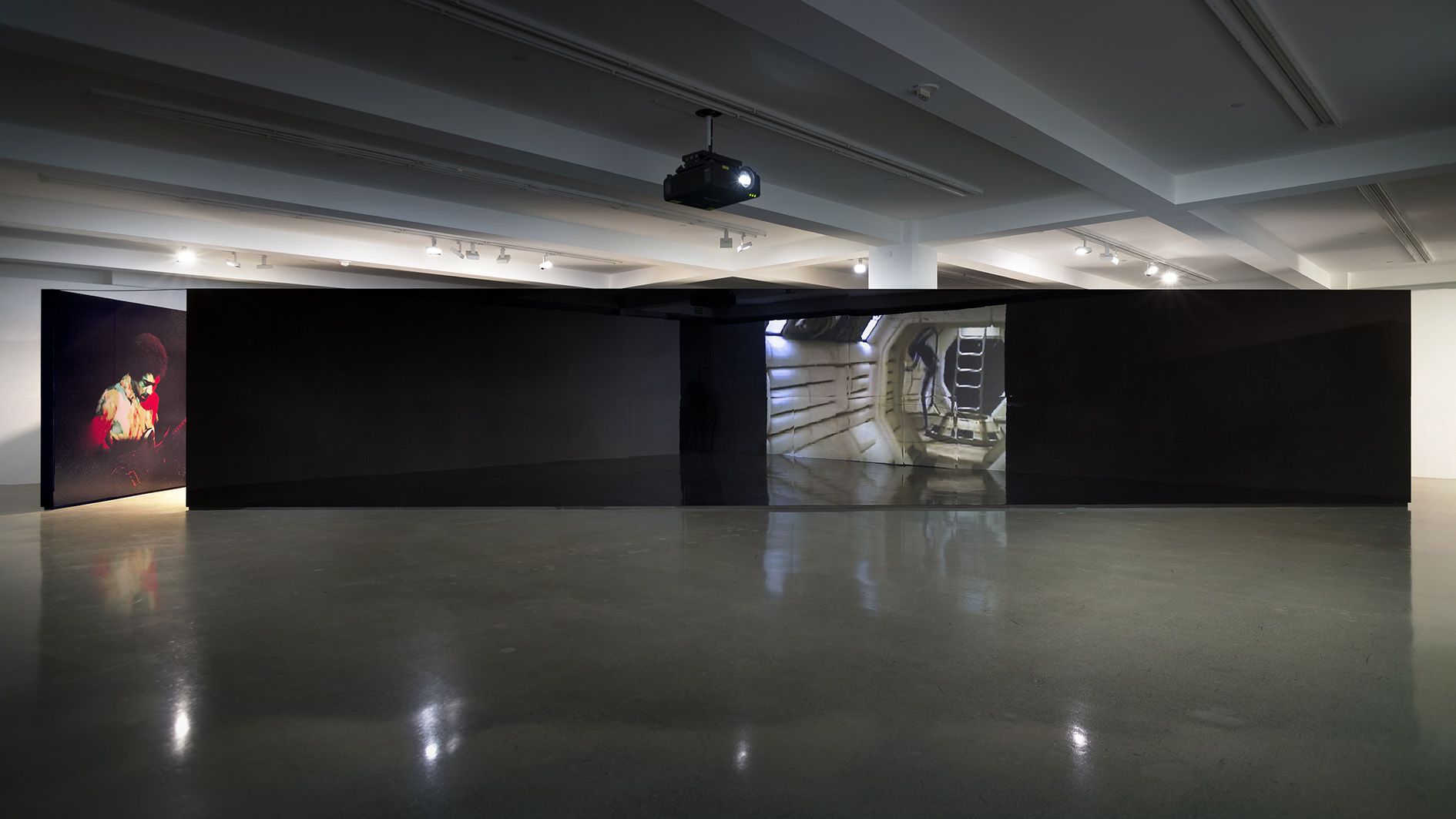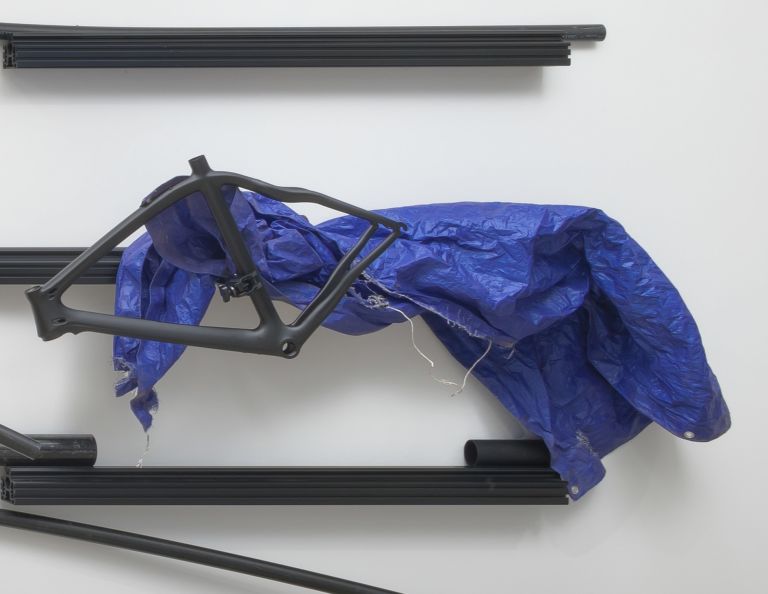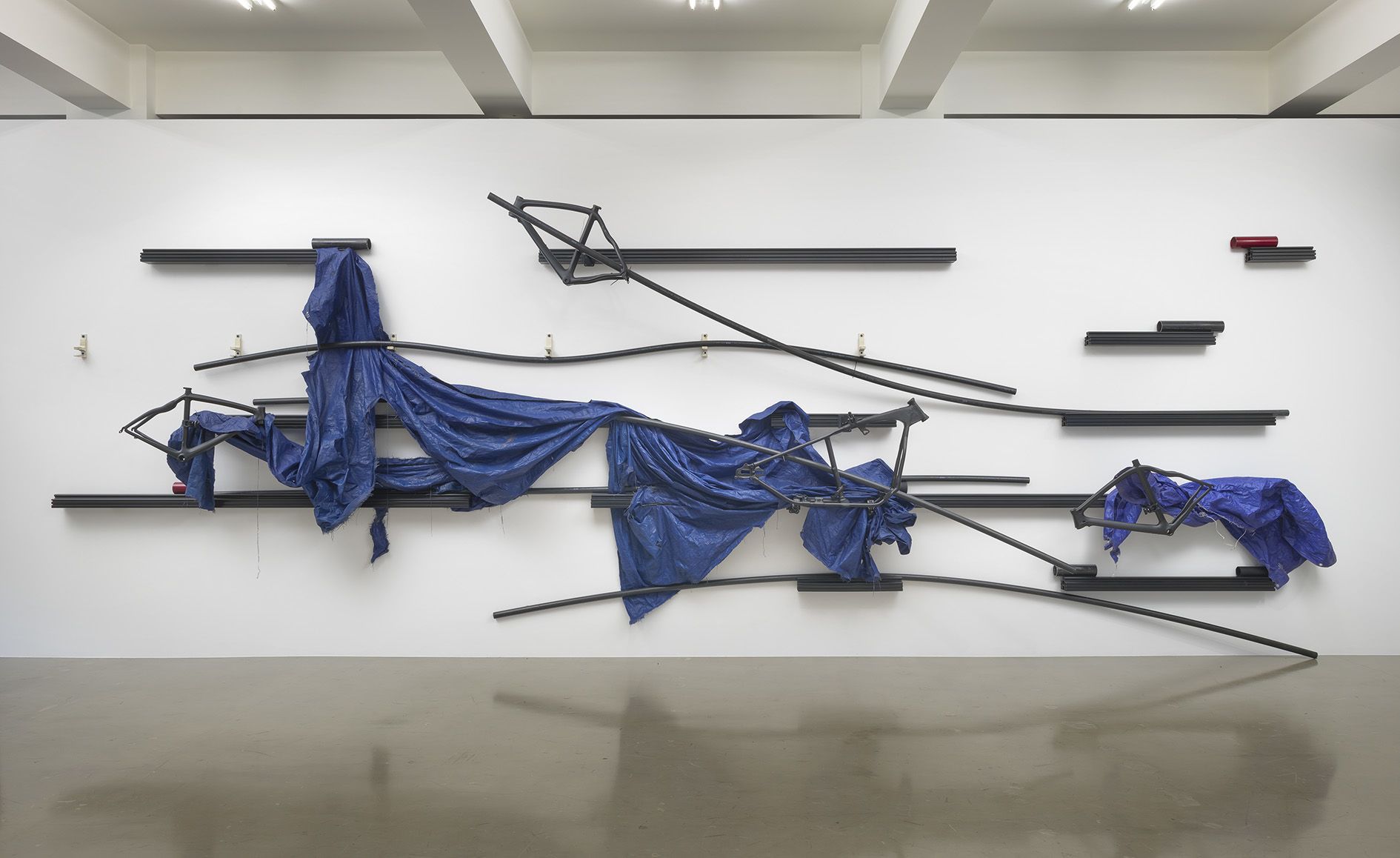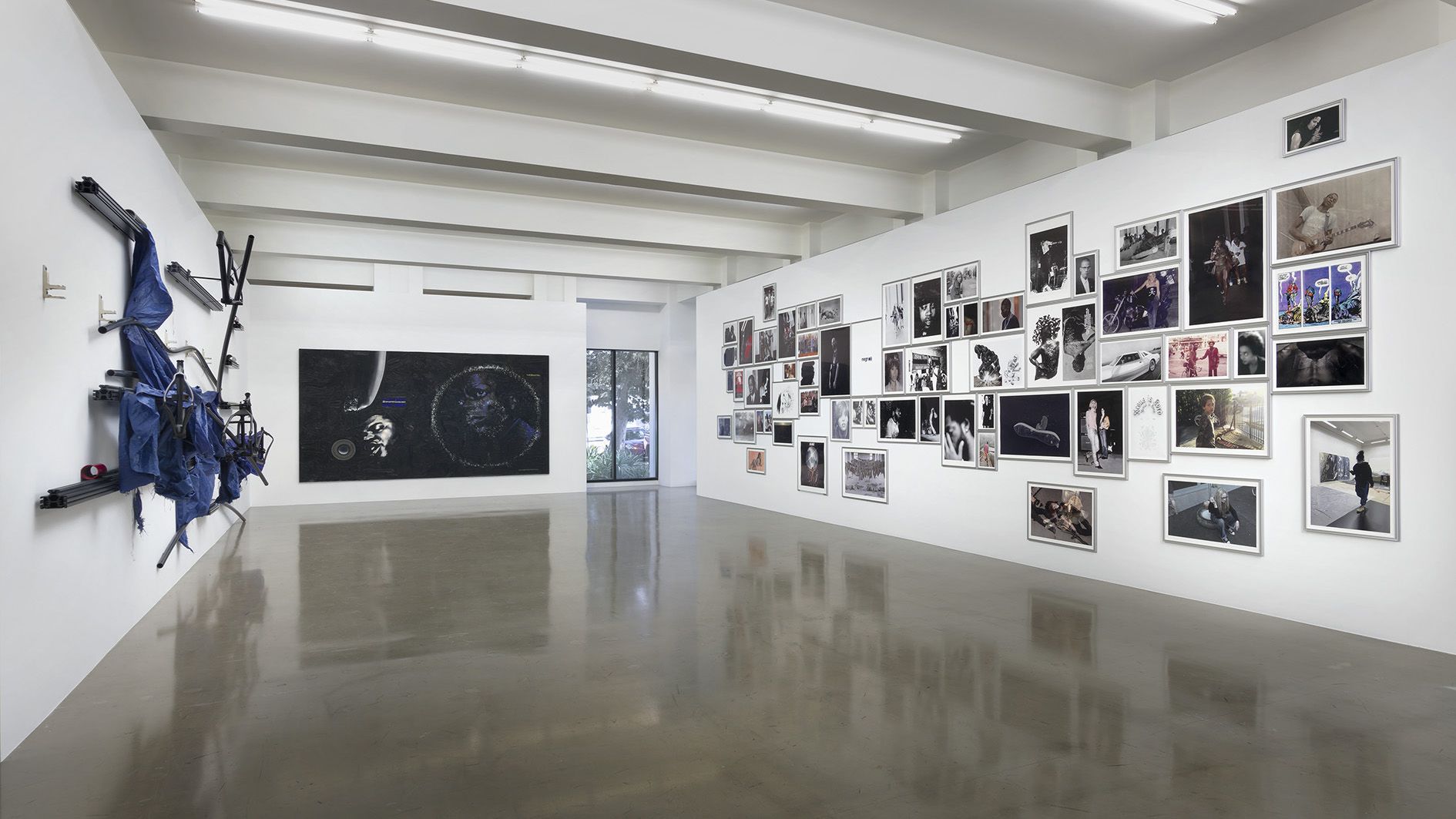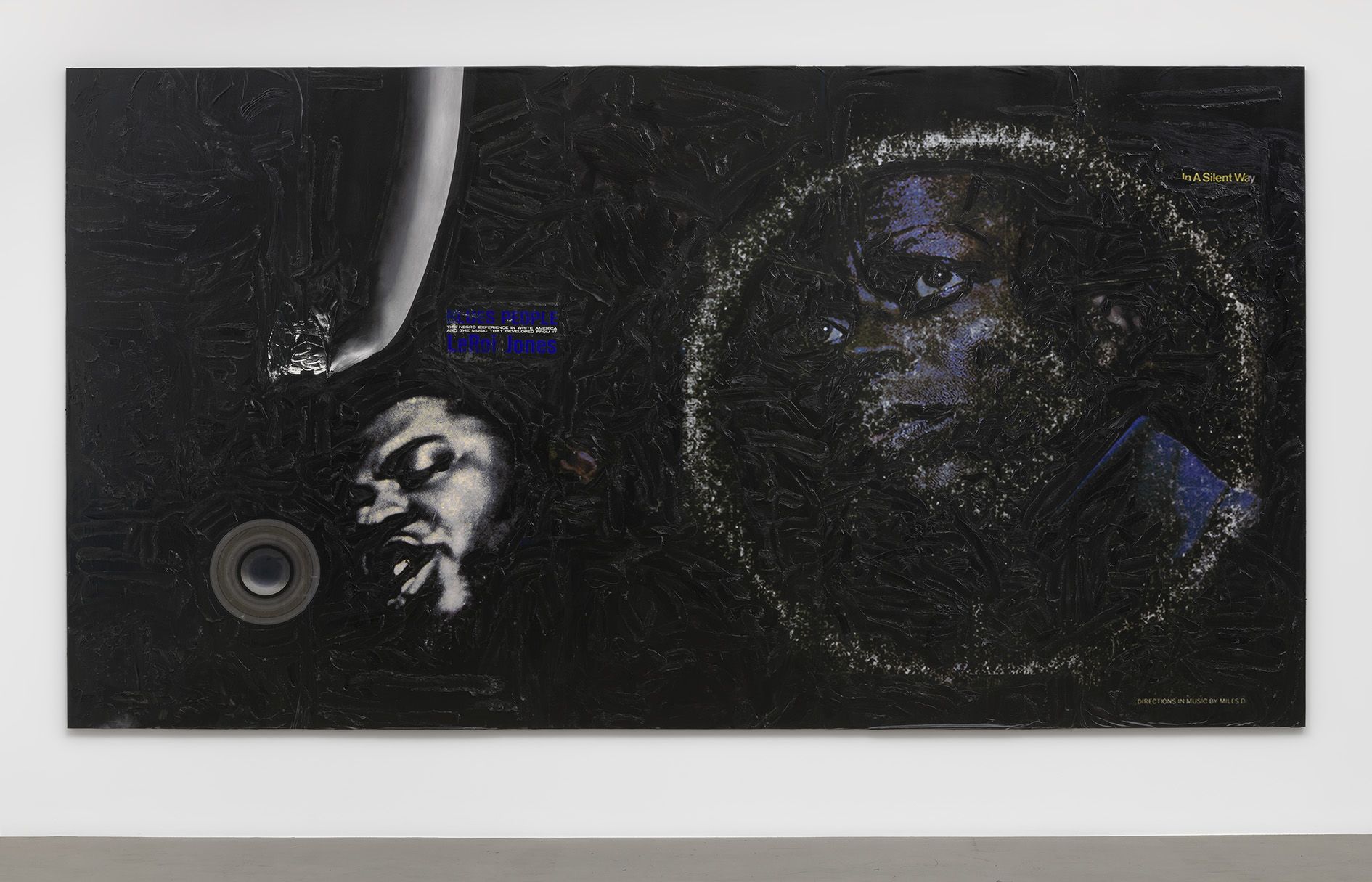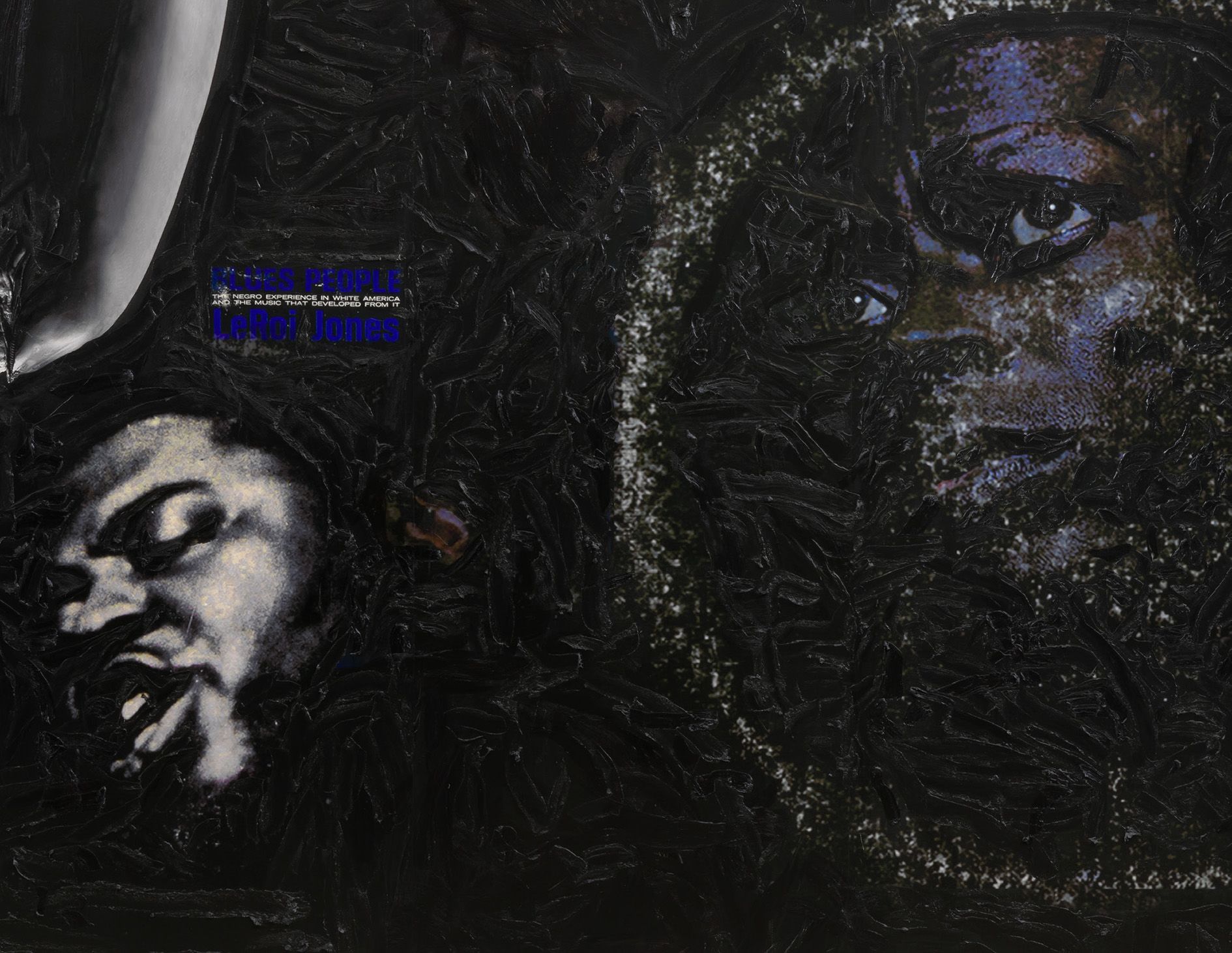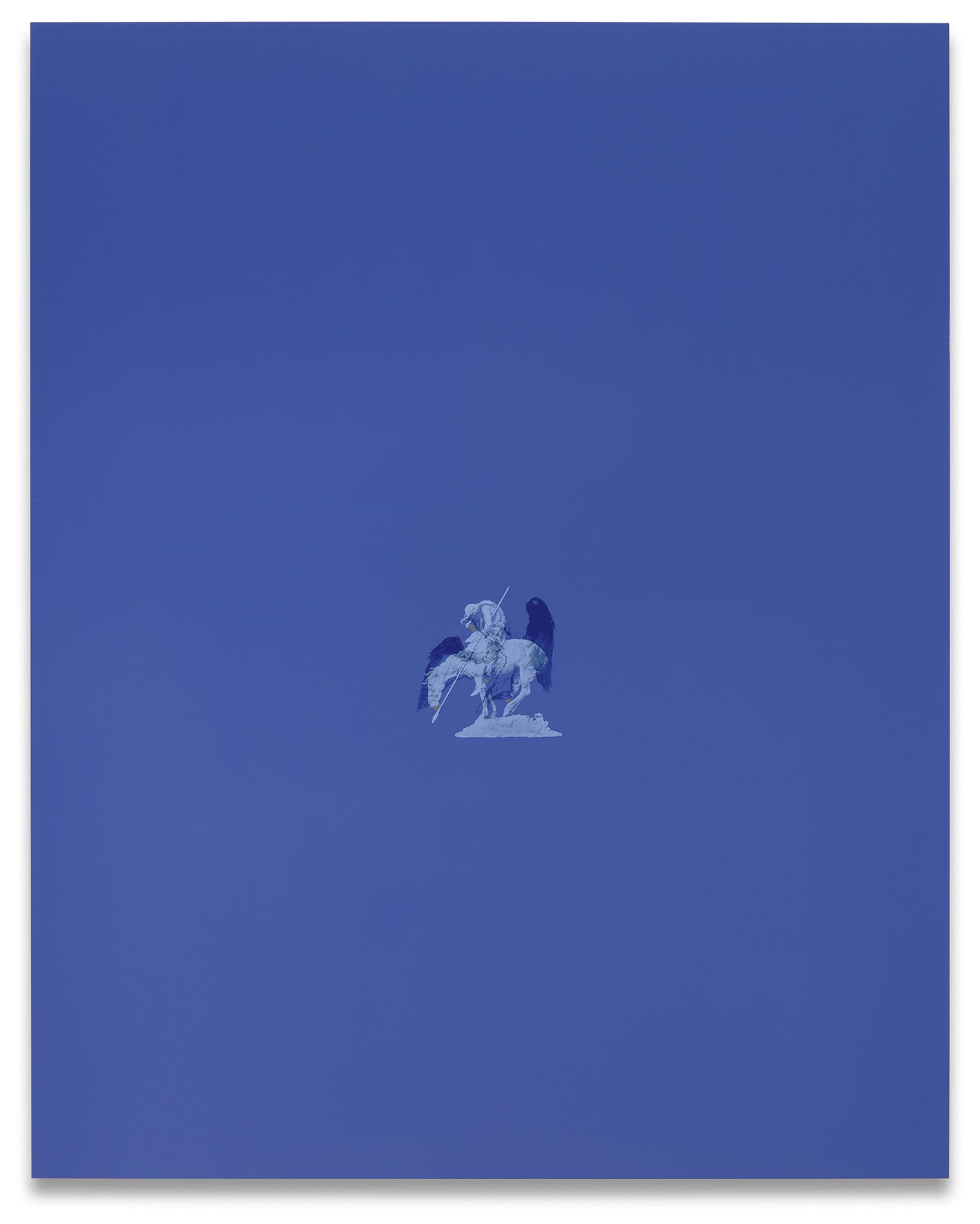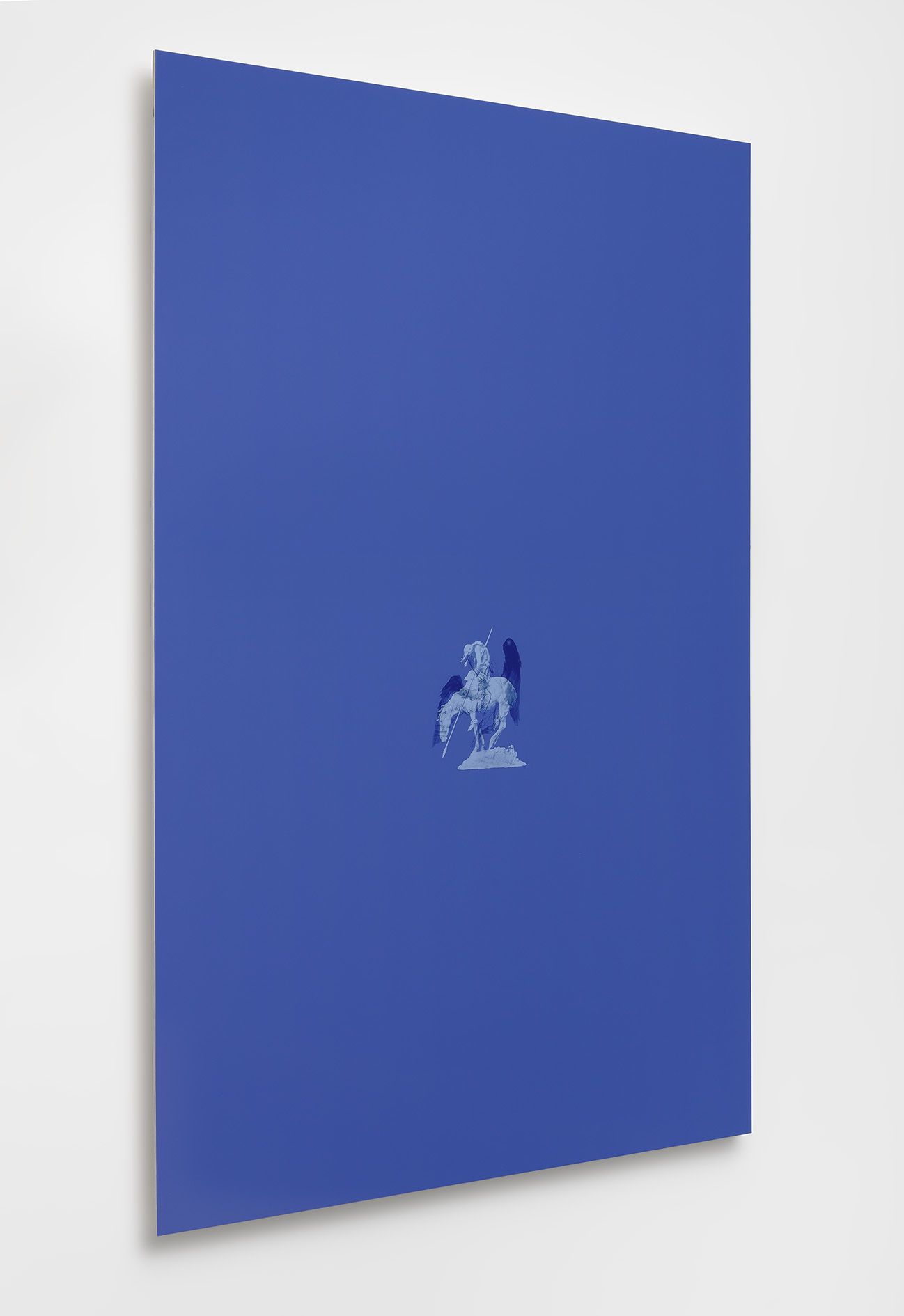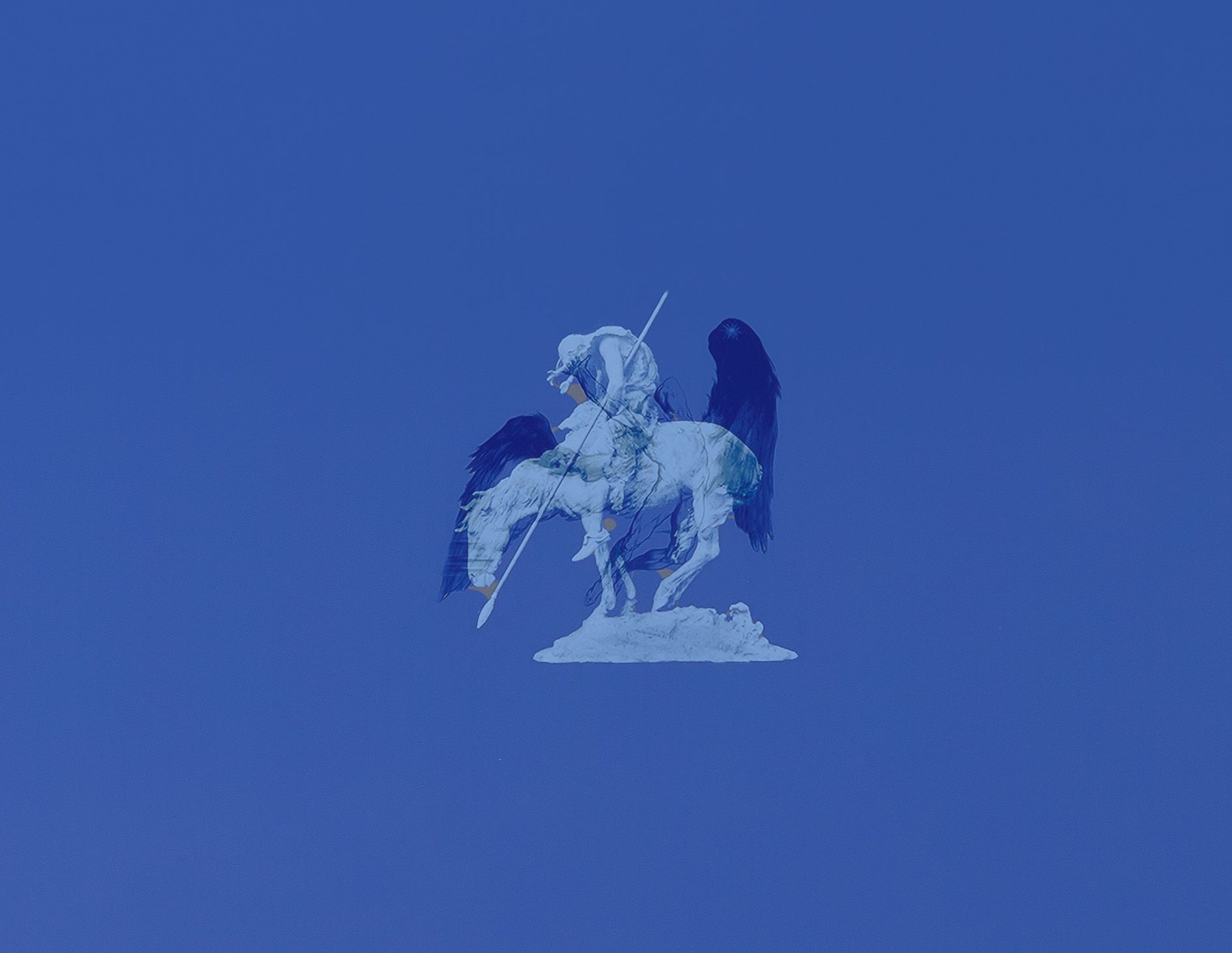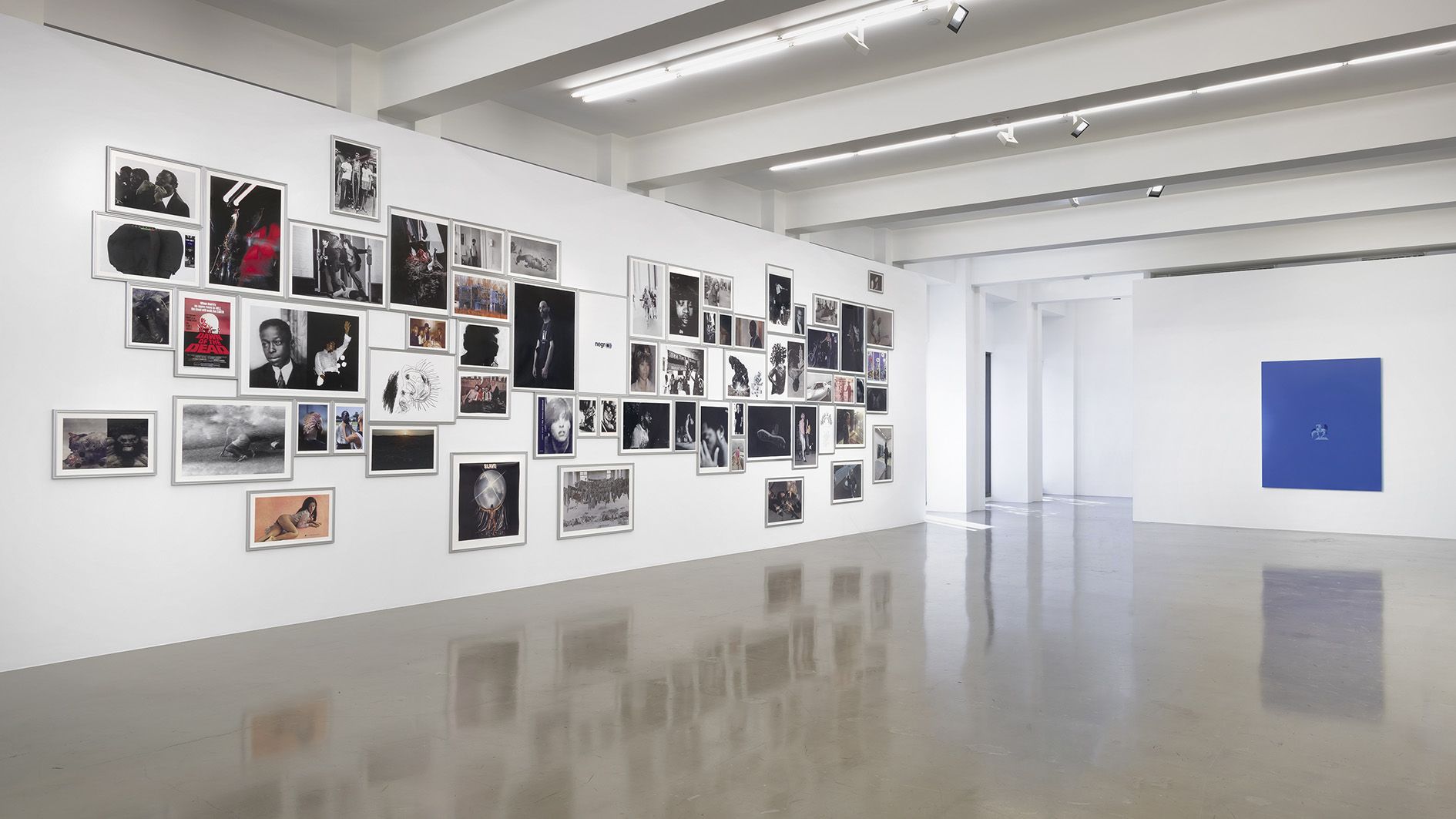The first work visitors encounter in the exhibition, BG seamlessly blends shots from Martin Scorsese’s Taxi Driver—specifically its culminating, gut-wrenching brothel shootout—with re-edited and newly filmed passages that manipulate the original movie’s image and sound. In Jafa’s hands, Taxi Driver’s protagonist, Travis Bickle (Robert De Niro), moves through a sequence of killings of Black pimps and johns, rather than the white characters that appear in Scorsese’s film, in hopes of “rescuing” the preteen Iris (Jodie Foster).
This reworking, which unfolds in layered, unrelenting repetitions over the course of an hour, brings to life the original version of Paul Schrader’s Taxi Driver script, in which those killed were written as Black. It also intersperses new scenes of the African American pimp, Scar (Jerrel O’Neal), murmuring and lost in thought, set to a looping phrase from Stevie Wonder’s love anthem “As.” BG thus makes explicit the racial animus that filters through Taxi Driver, as seen through Bickle’s antisocial, violent white lens, while also creating space for Black self-possession.

